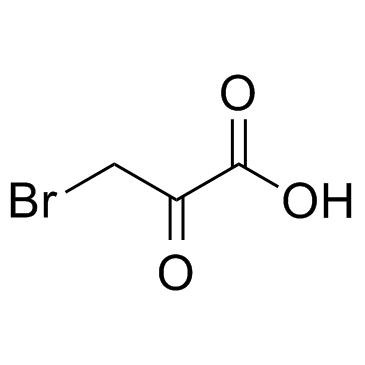Targeting aerobic glycolysis: 3-bromopyruvate as a promising anticancer drug.
Simone Cardaci, Enrico Desideri, Maria Rosa Ciriolo
Index: J. Bioenerg. Biomembr. 44(1) , 17-29, (2012)
Full Text: HTML
Abstract
The Warburg effect refers to the phenomenon whereby cancer cells avidly take up glucose and produce lactic acid under aerobic conditions. Although the molecular mechanisms underlying tumor reliance on glycolysis remains not completely clear, its inhibition opens feasible therapeutic windows for cancer treatment. Indeed, several small molecules have emerged by combinatorial studies exhibiting promising anticancer activity both in vitro and in vivo, as a single agent or in combination with other therapeutic modalities. Therefore, besides reviewing the alterations of glycolysis that occur with malignant transformation, this manuscript aims at recapitulating the most effective pharmacological therapeutics of its targeting. In particular, we describe the principal mechanisms of action and the main targets of 3-bromopyruvate, an alkylating agent with impressive antitumor effects in several models of animal tumors. Moreover, we discuss the chemo-potentiating strategies that would make unparalleled the putative therapeutic efficacy of its use in clinical settings.
Related Compounds
| Structure | Name/CAS No. | Molecular Formula | Articles |
|---|---|---|---|
 |
3-Bromopyruvic acid
CAS:1113-59-3 |
C3H3BrO3 |
|
3-Bromopyruvate: A novel antifungal agent against the human ...
2013-05-03 [Biochem. Biophys. Res. Commun. 434(2) , 322-7, (2013)] |
|
Inhibition of glucose turnover by 3-bromopyruvate counteract...
2014-07-15 [Oncotarget 5(13) , 5177-89, (2014)] |
|
Insights into the carboxyltransferase reaction of pyruvate c...
2013-11-01 [Biochem. Biophys. Res. Commun. 441(2) , 377-82, (2013)] |
|
Regulation of the proliferation of colon cancer cells by com...
2013-02-01 [Anticancer Res. 33(2) , 401-7, (2013)] |
|
Deprive to kill: glutamine closes the gate to anticancer mon...
2012-12-01 [Autophagy 8(12) , 1830-2, (2012)] |